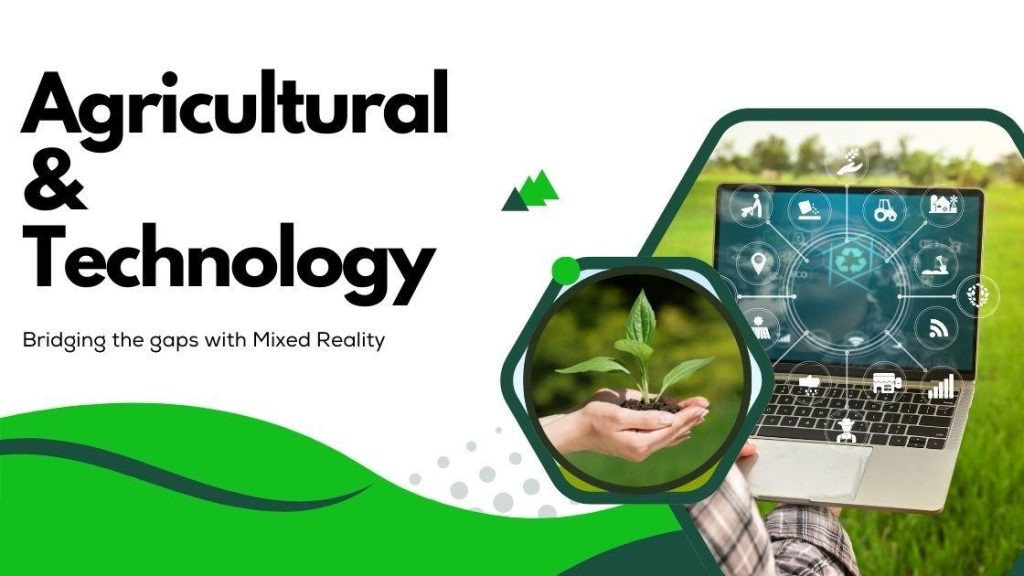As the global population grows, agriculture faces unprecedented challenges, from increasing food demands to environmental sustainability. Innovations in technology are crucial to addressing these issues, and Somit Bhattacharya, an expert in digital solutions, explores the role of Mixed Reality (MR) in transforming farming practices. Bhattacharya’s insights emphasize how this cutting-edge technology is revolutionizing agriculture by optimizing resource management, enhancing productivity, and providing immersive training solutions.
Precision Farming with Real-Time Insights
Precision farming has evolved dramatically, and MR is taking it a step further by integrating data from multiple sources and presenting it in a highly visual and interactive format. This allows farmers to monitor soil conditions, moisture levels, crop health, and pest infestations more effectively. Wearable devices provide real-time data overlays, enabling visualization of everything from soil nutrient levels to potential pest hot spots. For instance, MR-enhanced tools enable farmers to observe soil nutrient maps in 3D, ensuring the optimal distribution of fertilizers and pesticides. By guiding machinery with precise, real-time data, MR technology minimizes the environmental impact of agricultural chemicals, reduces wastage, and boosts yield.
Optimizing Resources: Water and Energy Efficiency
MR is not only improving productivity but also optimizing the management of essential resources like water and energy. With water scarcity being a major challenge, MR technology helps farmers manage water more efficiently by integrating soil sensors, weather data, and irrigation systems, allowing real-time visualization of irrigation needs and ensuring no water is wasted. Similarly, MR aids energy conservation by providing real-time data on energy use, optimizing operations. Farmers can plan efficient routes for machinery, reducing fuel consumption and energy waste. Studies show that MR-guided equipment can significantly lower energy costs and environmental impact.
Immersive Training: A New Approach to Farming Education
One of the most exciting applications of MR in agriculture is its potential in immersive farmer training. Traditional training methods can be risky and costly, especially when dealing with expensive farming equipment. MR simulations allow farmers to practice operating machinery, troubleshoot potential problems, and refine maintenance skills in a safe virtual environment. This hands-on, interactive training can significantly reduce errors and improve the operational efficiency of farmers. Farmers can also use MR to gain a deeper understanding of crop management. From simulating optimal planting techniques to managing pest control, MR offers an engaging platform to visualize and practice best farming practices. By immersing farmers in these virtual environments, they gain a higher level of competence and confidence, leading to more sustainable and productive farming practices in the real world.
Overcoming Challenges: Cost and Integration
While the potential of MR in agriculture is clear, several challenges must be addressed for widespread adoption. The cost of MR hardware and software can be prohibitive, especially for smaller farms, and many farmers still rely on legacy systems that may not integrate easily with MR technologies, creating technical challenges. Additionally, the success of MR depends on user adoption, and farmers with less technical experience may resist adopting new technology. However, as MR hardware becomes more affordable and software solutions evolve, these barriers will likely diminish. Streamlined integration and user-friendly interfaces are being developed, making MR a standard tool in modern farming, enhancing decision-making, optimizing resource management, and boosting productivity.
Looking Ahead: Future of MR in Agriculture
As MR technology continues to evolve, its impact on agriculture will expand further, setting the stage for a more resilient and innovative farming industry. From resource management to training, future developments may include the integration of MR into vertical farming, urban agriculture, and smart farming practices that adapt to environmental changes. MR’s role in agriculture signifies a shift toward more sustainable, data-driven methods that improve productivity while reducing environmental impact. By embracing these innovations, the agricultural sector is well-positioned to meet the growing demands of the global population while maintaining a strong focus on sustainability.
In conclusion, Mixed Reality (MR) is transforming agriculture by addressing challenges in resource management, productivity, and training. As MR technology advances, its role in creating sustainable and efficient farming systems will expand. Despite hurdles like cost and integration, MR holds great promise for enhancing decision-making and reducing environmental impact. Somit Bhattacharya’s insights show how MR is shaping a more resilient and sustainable future for agriculture, poised to meet global demands.

